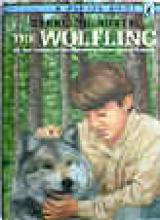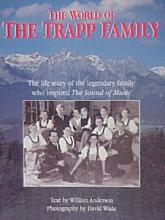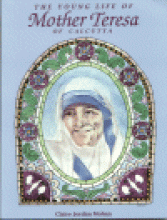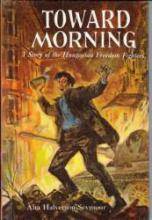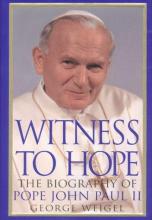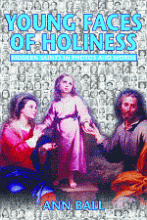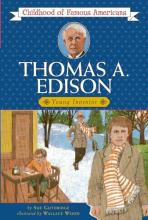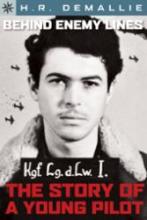Biographies
The Wolfling, A Documentary Novel of the Eighteen-Seventies
The bottom line of the story is that the main character, Robbie, must figure out who he is, and what he wants to do with his life. He comes to discover this through his relationships with both virtuous and morally suspect people who live in his town, and through his relationship with his mother and father, who are going through a similar discernment. Robbie learns how to deal with the morally suspect characters without condoning their actions, while emulating the virtuous characters. His parents are portrayed are virtuous, hard working people who must deal with the hardships of life on the frontier, the hardest of which is the loss of several children. Robbie makes virtuous choices, and in that, the book is a good choice for young adolescents.
North weaves actual historical events and real historical characters into the story and in some ways this is the most interesting part of the story. He spends a good deal of time introducing the reader to Thure Kumlein, a Swedish naturalist who is largely unknown, but made great contributions in natural history research at the time. If I lived in Wisconsin I would be seeking out his works and trying to travel to the part of Wisconsin where this story takes place.
In the back of the book, North gives scientific and historical information about the events described in the story. He describes the Panic of 1873 and the great Chicago fire as adeptly as he describes the habits of wolves in that region. Speaking of wolves, you might wonder why this review doesn't mention the wolfling so far. The dog is important as a plot device to move the story of Robbie's coming of age, but he is not central to the story. However, your more subtle readers may see an analogy between the wolfling and Robbie. The wolfling straddles two worlds, the wild and the tame, just as Robbie straddles much the same two worlds, the "wild" unruliness of the frontier, and the "tame" of schooling and civilization.
I couldn't help comparing this book to North's more widely acclaimed Rascal, and I like this one much better. In Rascal, North spends a lot of time "teaching" about his evolutionary and social philosophies. I had decided my children shouldn't read it until they were older, even though they would love all the outdoor exploits of the main character. I think that Wolfling is a better story with a better message. And, the best part as far as my children are concerned is that Robbie doesn't have to give up the wolfling in the end.
The World of the Trapp Family
This in-depth history of the Trapp family (shortened from "von Trapp" when they became American citizens) begins with young Captain Georg von Trapp - a highly-decorated hero of the Austrian Navy during World War I. He and his wife Agathe (whose grandfather invented the torpedo) had just started a family a few years before the war broke out in 1914. The happy couple had seven children - Rupert, Agathe, Maria, Werner, Hedwig, Johanna and Martina - before Agathe's untimely death of scarlet fever in 1922.
Maria Kutschera was a twenty-two year old postulant at Nonnberg Abbey when her Mother Superior assigned her to become a teacher for one of the von Trapp children who was too sickly to attend school. The Captain and Maria were married within the year and Maria gave birth to three more children: Rosmarie, Eleanore and Johannes. Although there was a certain amount of musical talent in the family to begin with, Maria introduced to the family to a great variety of beautiful music (sacred music, traditional folk songs, etc.). Music became a big part of their lives and something that knit the family together very tightly.
After the family fortune was lost (1932) in events leading up to World War II, the family took boarders into their home in order to simply be able to keep their home. Because of these events, they became acquainted with a young priest, Fr. Franz Wasner in 1935. Fr. Wasner was a canon lawyer and musician who became interested in the family's musical talent and eventually became their musical mentor, conductor and composer who emigrated with them to America during the difficulties of World War II. He introduced them to an even greater variety of great vocal music and individual family members became skilled with the recorder and other instruments as well. Reluctantly, they began to accept invitations to sing before audiences and eventually came to realize that this was part of God's plan for them.
After the Nazi's took over Austria in 1938, the family had to turn down three separate propositions from the enemy: Captain von Trapp was offered the command of a German submarine, the eldest son - who was just barely out of medical school - was offered the post as head of one of the great Vienna hospitals, and the family choir was invited to sing for Hitler's birthday celebration. Each of these offered possibilities of fame and fortune, but the family felt that these would also compromise their basic obligations to God and country. Leaving behind their large estate and nearly all of their belongings, they traveled to America where they were invited to give an extensive concert tour.
The story continues to follow the von Trapp family as they make their way through the War years (with two sons fighting for the U.S.), become American citizens, tour as a choir for twenty years, establish themselves and a farm on a lovely site in Vermont and many other events all the way up to recent photos of the six children who are still alive today.
The book is brimming with hundreds of glossy photos (black and white of older family photos, color of beautiful scenes from Austria and America and more recent pictures) that are a real feast for the eyes. Their lives were so intertwined with significant parts of history, music and culture that this book - along with Maria Trapp's autobiography - could make an interesting supplement to a study of the 20th century. The beauty of the Catholic culture lived fully by the Trapp family through music, traditions, celebrations of Catholic faith and other aspects of their lives will make this especially enjoyed by Catholic families of today.
Donated for review by the author, William Anderson.
The Young Life of Mother Teresa of Calcutta
Toward Morning, A Story of the Hungarian Freedom Fighters
Witness to Hope
In what is being widely hailed as the definitive biography of Pope John Paul II, faithful Roman Catholic theologian and journalist George Weigel presents a thorough look at Pope John Paul II from the inside. With a rich complement of Polish history and in-depth coverage of the Holy Father's cultural, philsophical and spiritual background, he portrays a vivid and accurate picture of who the Pope really is and what he's trying to accomplish (and has already accomplished) as the Vicar of Christ. A long and moderately difficult read (the base text is about 850 pages followed by approximately 150 pages of footnotes, appendices and a thorough index) it's the sort of book that would not be required reading for every high school student, but would make excellent reading for those brave enough to attempt it and required reading for adults trying to understand where the Holy Father comes from. The book touches upon many major issues and events of the 20th century (including World War II and the fall of Communist Russia) as well as an in-depth look at the history and culture of Poland going back many centuries. Includes 32 pages of photographs (the more recent ones in full color).
Click here for a review of this book written by Cardinal Avery Dulles (from First Things)
Widely available used and in bookstores and discount stores everywhere as well as the sources listed below. The audio book is excellent as well.
Young Faces of Holiness, Modern Saints in Photos and Words
In a world that feeds the imagination of children to think only of themselves, this book is a refreshing anecdote to the me-ism of our modern culture. Ann Ball does a marvelous job of showing the spiritual development of these young saints. They too struggled with their faults. At the same time, they are a source of hope, because they chose to suffer or even die for Christ. We need to be reminded over and over again to strive to achieve the Divine Smile in the midst of crosses and suffering. Many of them did nothing extraordinary in terms of the world. They wanted to love God to the best of their ability. For example, although Annie Zelikova lay dying in terrible pain from tuberculosis, she was known for her constant smile. She said, "I must smile to my last breath." Another young candidate for sanctity, Gerard Raymond, wrote, "Help me, O Jesus, to love You more and more."
After reading just one or two stories, we are forced to make an examination of conscience and ask ourselves, "If they can conquer their faults, then surely I can conquer mine and strive to achieve the same attitude as these children." Although no reading level is suggested, the average 4th grader could probably read it. Since most children's comprehension level is far beyond their reading level, this book would also make an ideal read aloud to younger children. For many young children seeing pictures of these children will be an eye-opening experience. Other young people their own age tried to be holy.
Because a few of the children experienced violent deaths, you may wish to skip those stories for young children. Both Maria Goretti and Blessed Antonia Mesina were brutally murdered and died defending their purity because of their love of Christ.
Note from the Webmaster: I would like to suggest that this book is ideally suited to pre-teens and teenagers (approximately 6th grade and up) who will be able to reflect on the heroism of these children under difficult circumstances (and sometimes extreme suffering) and be inspired to apply some measure of that heroism to their own lives.
Thomas A. Edison: Young Inventor
This is a fascinating and often humorous story of one of the most renowned inventors of all time. As a boy, Edison was fascinated by the world around him and full of questions about everything. Although he had many mentors as a boy, his first grade teacher reacted so negatively to his natural curiosity that his mother took him out of school and taught him at home. His adventures involving chemistry, trains and printing newspapers make for enjoyable and interesting reading. Edison was clearly a boy of creativity and ingenuity and a positive role model for children of today in sharing Edison's scientific interests and natural curiosity. My six year old boy, in particular, was completely enthralled when we read this story aloud.
Copyrights 1947/1959. Several later printings.
The Swamp Fox of the Revolution
A Landmark book with complete index

